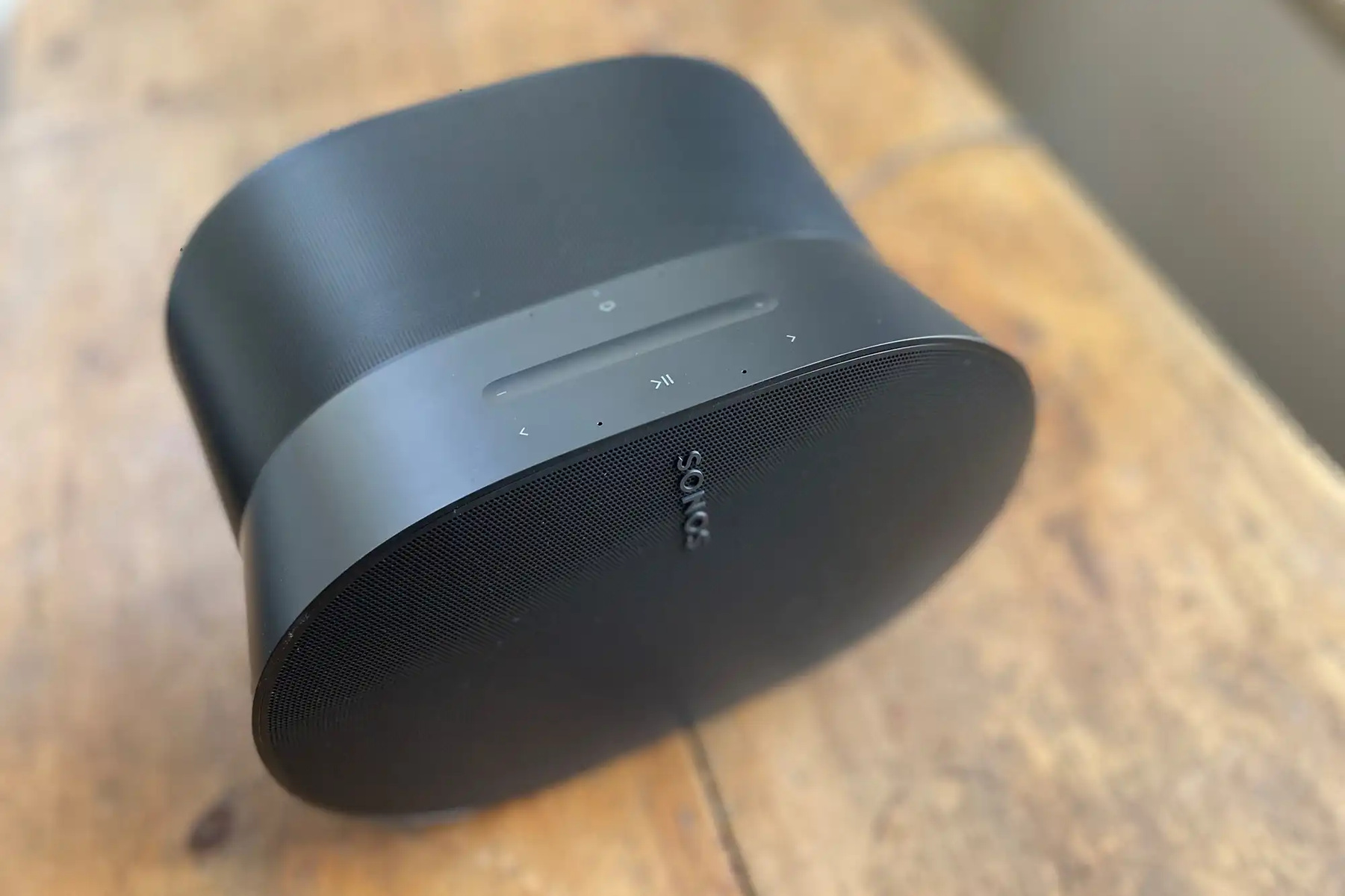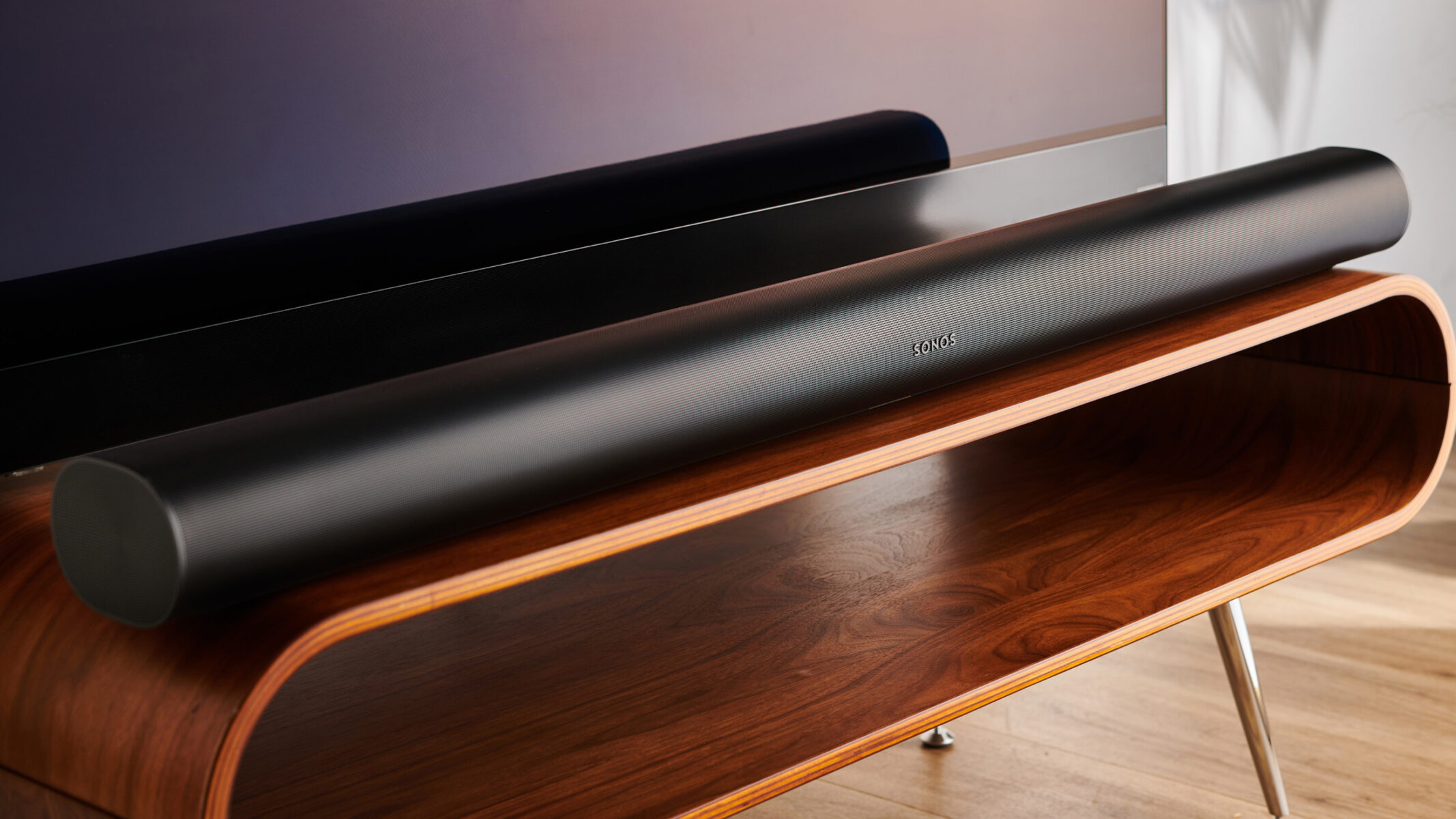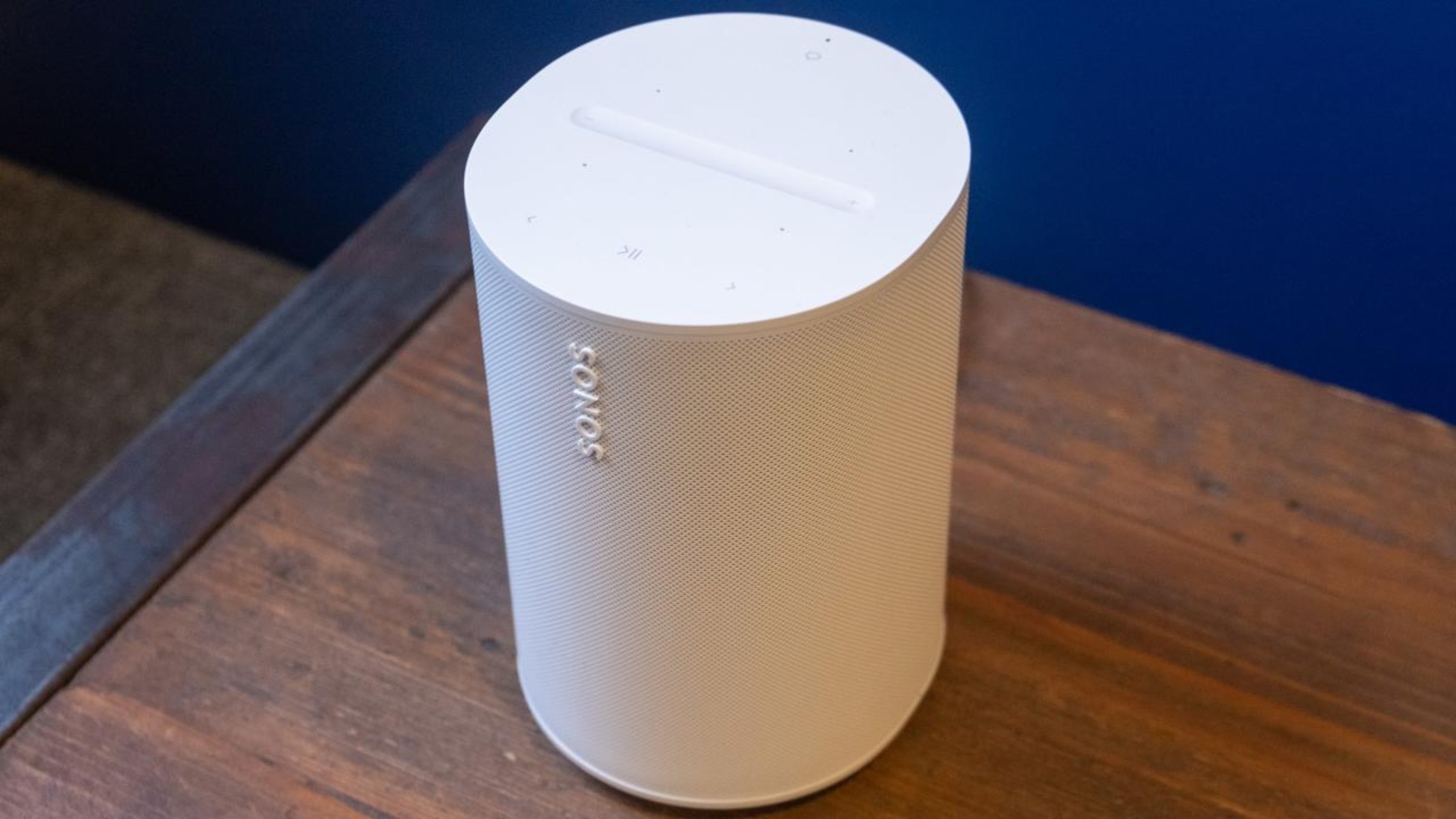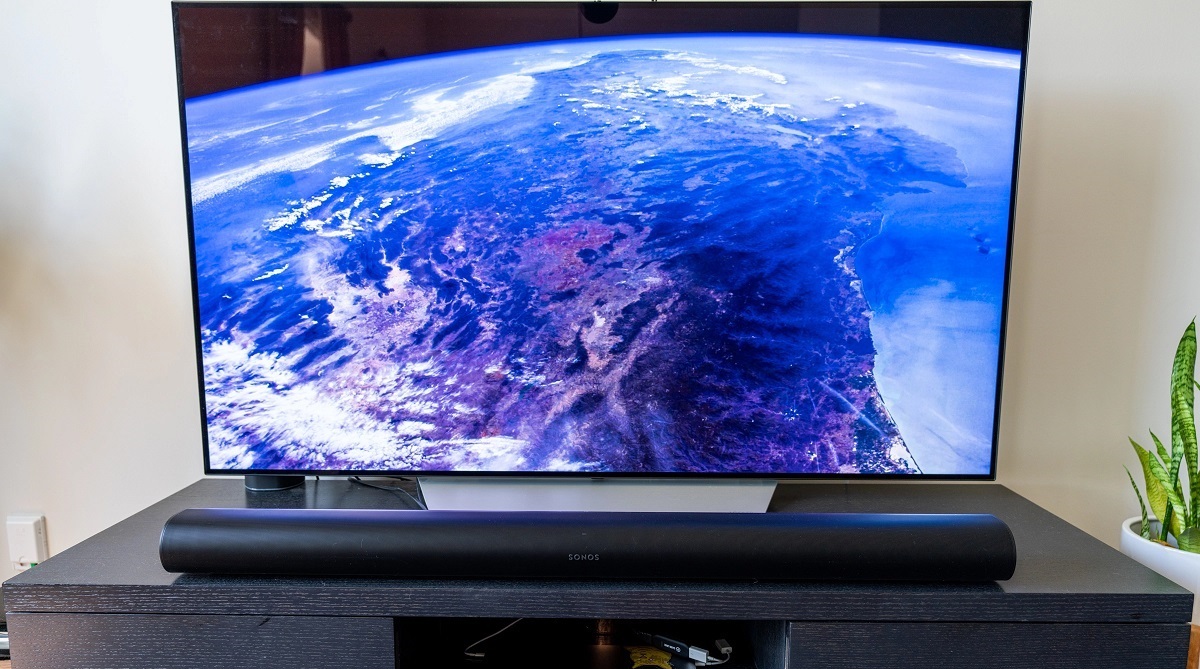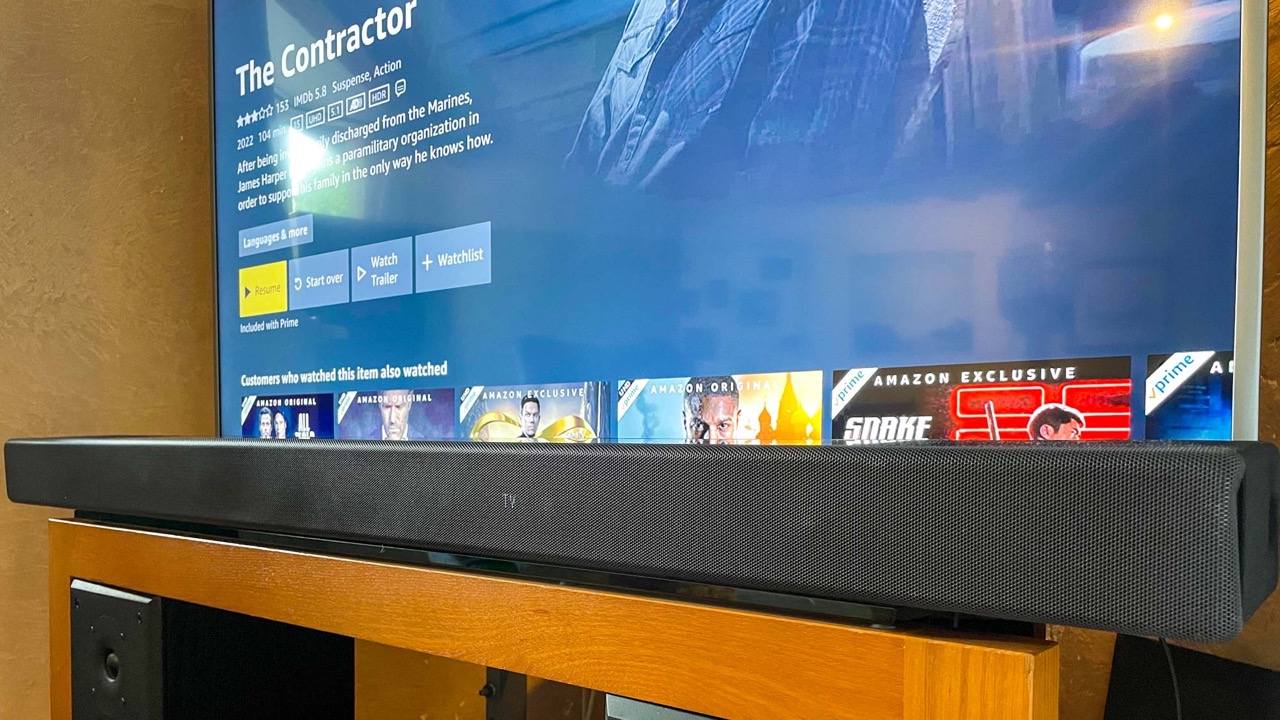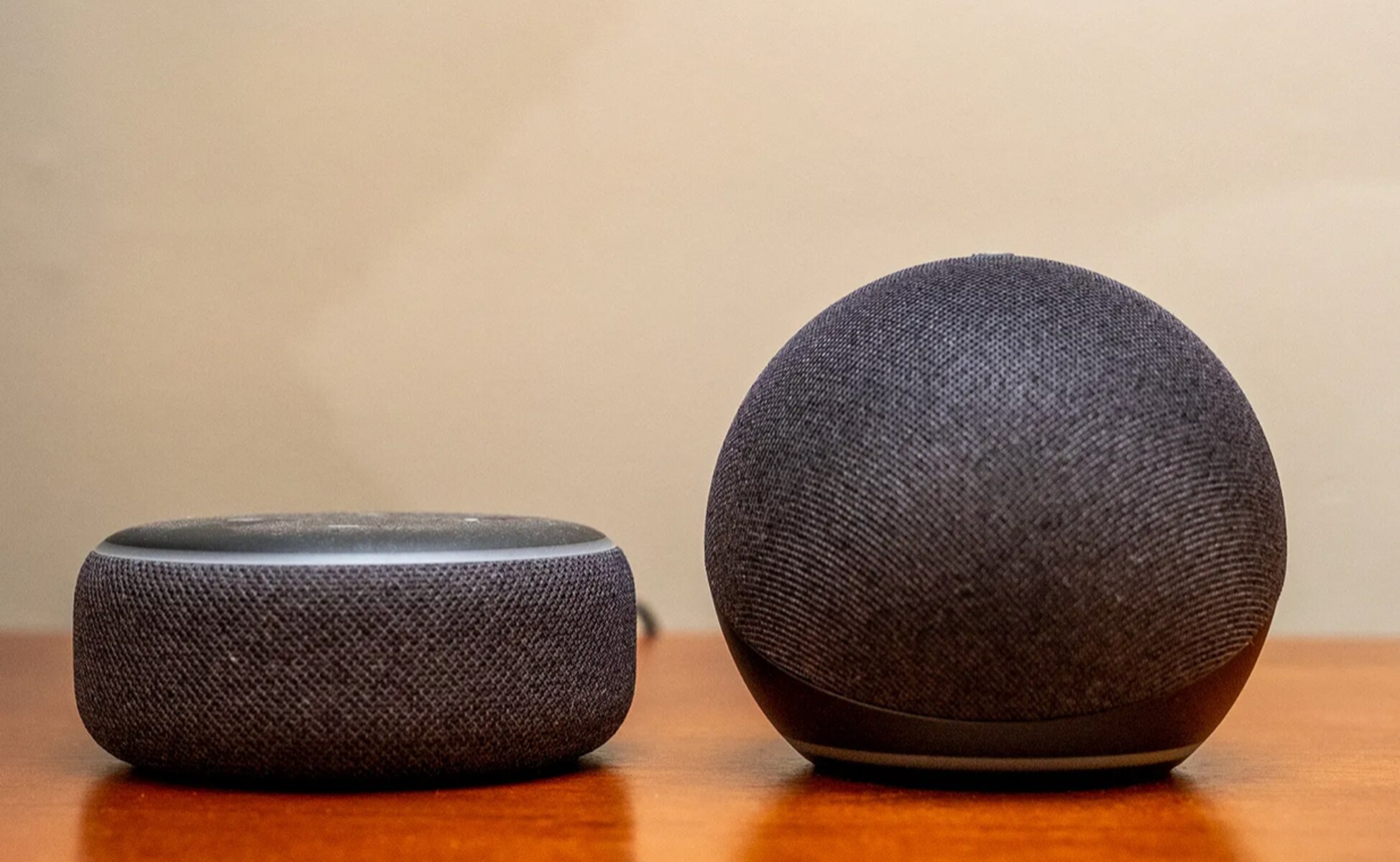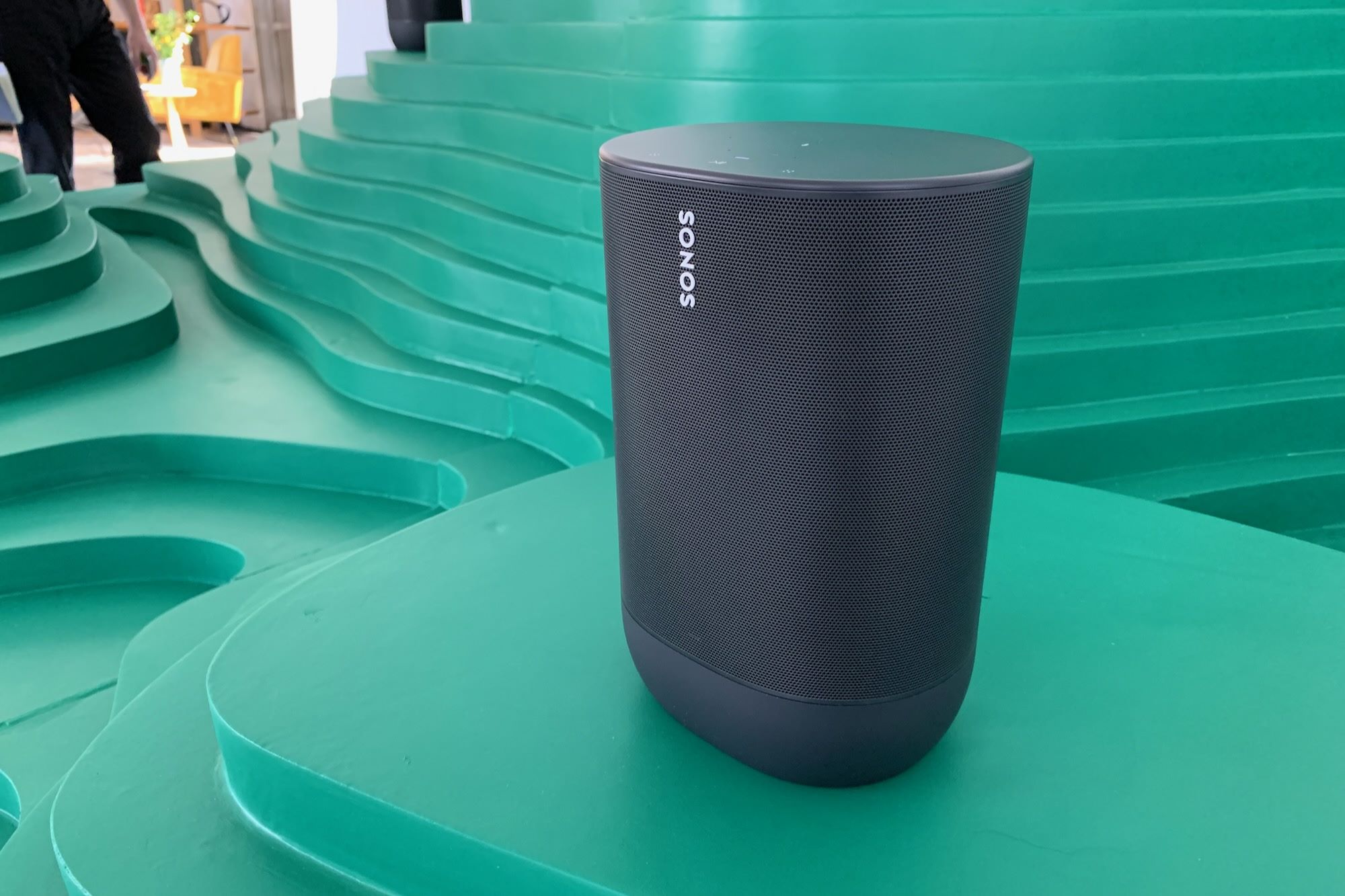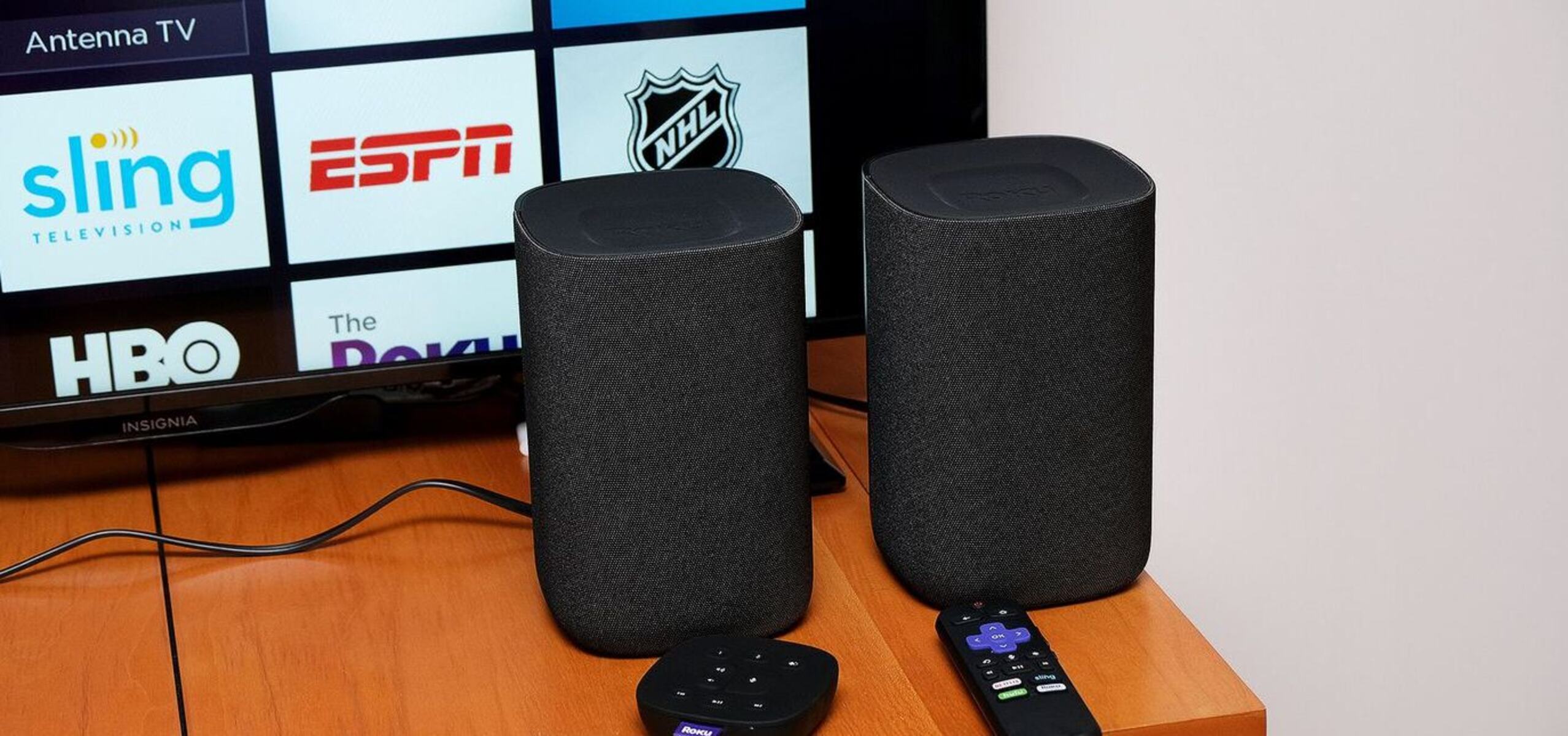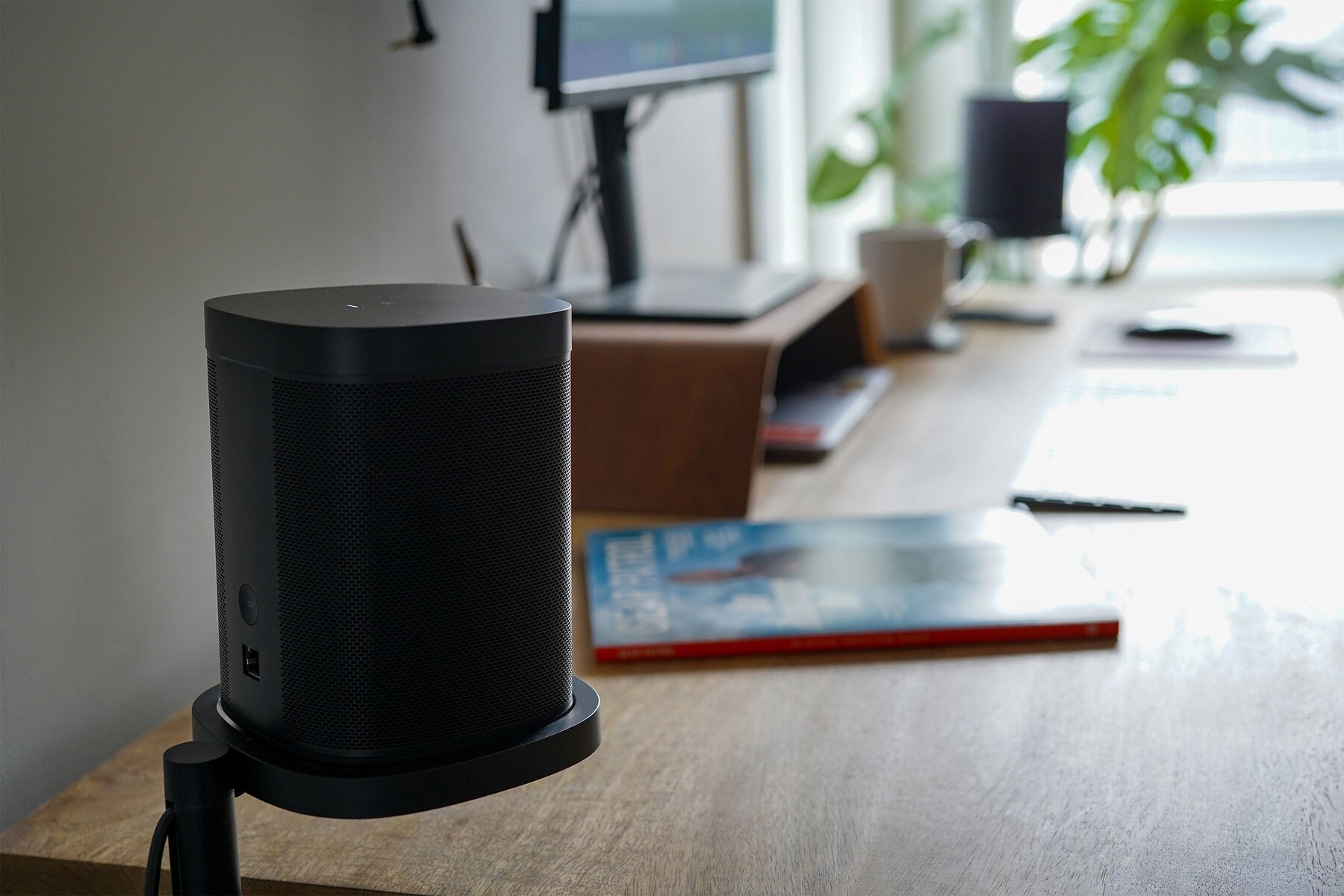Introduction
Smart speakers have revolutionized the way we enjoy music, control our smart homes, and interact with technology. These devices have become an essential part of our daily lives, offering convenience, entertainment, and connectivity all in one package. One brand that has made a significant impact in the world of smart speakers is Sonos.
Sonos has earned a reputation for producing high-quality audio devices that seamlessly integrate with the latest technology trends. But what exactly defines a smart speaker from Sonos’ perspective? In this article, we will explore Sonos’ definition of a smart speaker and the features that set their devices apart from the competition.
As technology continues to evolve, our expectations for smart speakers have grown exponentially. People want more than just a device to play music; they want a device that adapts to their needs, simplifies their lives, and enhances their overall audio experience. Sonos has taken these expectations to heart and has developed a range of features that make their smart speakers stand out.
In the following sections, we will delve into Sonos’ definition of a smart speaker and explore the features that make their devices truly intelligent and intuitive. From seamless integration with multiple streaming services to voice control capabilities and multi-room audio synchronization, Sonos delivers an experience that goes beyond simple audio playback.
So, without further ado, let’s explore Sonos’ vision of a smart speaker and the innovative features that make their devices a top choice for music lovers, tech enthusiasts, and anyone looking to elevate their audio experience to new heights.
What is a Smart Speaker?
A smart speaker is a wireless, voice-enabled device equipped with integrated virtual assistant technology. It combines the functionalities of a traditional speaker with the capabilities of a virtual assistant, making it a powerful and convenient addition to our everyday lives.
At its core, a smart speaker is designed to play audio content. It connects to various streaming services, such as Spotify, Pandora, or Apple Music, allowing users to effortlessly stream their favorite music, podcasts, or radio stations. However, what sets a smart speaker apart from a regular speaker is its ability to connect to the internet, understand voice commands, and act as a personal assistant.
One of the key features of a smart speaker is its integration with virtual assistants like Amazon Alexa, Google Assistant, or Apple Siri. These virtual assistants utilize artificial intelligence (AI) and natural language processing (NLP) to understand spoken commands and perform a wide range of tasks. Users can simply ask the smart speaker to perform actions like setting reminders, providing weather updates, answering questions, or even controlling smart home devices.
Another defining characteristic of a smart speaker is its ability to adapt and learn from user preferences and behaviors. Through machine learning algorithms, these devices can analyze user interactions and tailor recommendations or responses based on individual preferences. This personalized experience enhances not only the audio playback but also the overall usability of the device.
In addition to voice control and personal assistant capabilities, smart speakers often offer seamless integration with other smart home devices, creating a centralized hub for controlling various aspects of a connected home. Users can control lights, thermostats, security systems, and more, all with voice commands issued to the smart speaker.
With its wireless connectivity and compact design, a smart speaker can be placed in any room to provide a rich audio experience. Many smart speakers also support multi-room audio synchronization, allowing users to play the same audio content throughout their home or customize different sound zones for individual rooms.
In summary, a smart speaker is more than just a piece of audio equipment. It is a smart, connected device that blends high-quality audio playback with virtual assistant technology, providing users with a seamless and convenient way to control their music, get information, and manage their smart home devices. Sonos has taken these fundamental characteristics and added their own unique features and innovations to redefine the user experience.
The Rise of Sonos
Sonos is a brand that has played a significant role in shaping the smart speaker industry. Founded in 2002, the company aimed to create a wireless audio system that seamlessly integrated with various streaming services and delivered exceptional sound quality. From the beginning, Sonos had a clear vision: to provide music enthusiasts with a whole-home audio system that was both intuitive and technologically advanced.
Over the years, Sonos has consistently pushed the boundaries of audio technology, establishing itself as a leader in the industry. The brand’s commitment to innovation and attention to detail have garnered a loyal following of customers who appreciate the exceptional quality and versatility of Sonos products.
One of the key factors contributing to Sonos’ success is its dedication to delivering an immersive audio experience. Sonos speakers are designed with precision-engineered components and advanced acoustic technologies, resulting in crystal-clear, room-filling sound. Whether you’re listening to your favorite music or watching a movie, Sonos ensures that every note and sound effect is reproduced with utmost accuracy.
In addition to the impressive audio quality, Sonos has also prioritized seamless integration with a wide range of streaming services. From popular music streaming platforms like Spotify and Apple Music to audiobook services like Audible, Sonos supports an extensive list of services, giving users the freedom to access their preferred content from a single device.
Moreover, Sonos has embraced the rise of voice control technology, recognizing its potential to enhance the user experience. By integrating with virtual assistants like Amazon Alexa and Google Assistant, Sonos enables users to control their speakers and listen to their desired content using simple voice commands. This hands-free approach allows for effortless control and further simplifies the way we interact with our smart homes.
Another crucial aspect that has contributed to Sonos’ success is its dedication to user-centric design. Sonos seeks to understand the needs and preferences of its users, ensuring that their products are not only technologically advanced but also intuitive and user-friendly. The Sonos app, for example, provides a seamless interface that allows users to effortlessly control their speakers, manage their music libraries, and create customized playlists.
Sonos’ ongoing commitment to innovation and customer satisfaction has propelled the company to the forefront of the smart speaker industry. As technology continues to evolve, Sonos remains at the cutting edge, constantly refining and expanding its product lineup to meet the changing needs of its users.
Through its dedication to superior sound quality, seamless integration, voice control capabilities, and user-centric design, Sonos has cemented its position as a trailblazer in the smart speaker market. With its innovative approach and unwavering commitment to delivering exceptional audio experiences, Sonos is poised to continue its rise and shape the future of smart speakers.
Sonos’ Definition of a Smart Speaker
Sonos has a unique perspective on what defines a smart speaker. To Sonos, a smart speaker is not just a device that plays music or responds to voice commands. It is a meticulously crafted audio system that seamlessly integrates with the latest technology trends, delivering an exceptional audio experience while offering intuitive control and adaptability.
So what features make a Sonos speaker truly smart and innovative? Let’s explore Sonos’ definition of a smart speaker:
- Seamless Integration with Multiple Streaming Services: One of the core features of Sonos smart speakers is the ability to connect and seamlessly stream content from an array of popular music services. Whether it’s Spotify, Apple Music, Tidal, or a local music library, Sonos ensures that users have access to their favorite songs and playlists with just a few taps on their device.
- Voice Control Capabilities: Sonos recognizes the convenience and power of voice assistance. By integrating with virtual assistants like Amazon Alexa or Google Assistant, Sonos speakers can be controlled using simple voice commands. Users can ask their smart speaker to play a specific song, adjust the volume, or even request information, all without lifting a finger.
- Multi-Room Audio Synchronization: Sonos takes the concept of a smart speaker beyond a singular device. Their ecosystem allows for seamless synchronization of audio across multiple rooms. Users can create sound zones, play different songs in each room, or have synchronized playback throughout their entire home. This capability is perfect for parties, creating ambiance, or simply enjoying music in every corner of your living space.
- Intelligent Adaptability to Room Acoustics: Sonos speakers are designed to adapt and optimize the audio output based on the room they are placed in. Using sophisticated sensors and algorithms, Sonos speakers analyze the acoustics of the room and adjust the sound accordingly. This ensures that users experience optimal audio quality, regardless of the size or shape of the room.
- Open API and Integration with Smart Home Systems: Sonos believes in an open ecosystem and welcomes integration with various smart home systems. This allows users to control their Sonos speakers in conjunction with other smart devices, such as lighting systems, thermostats, or security systems. Sonos aims to provide a seamless and interconnected smart home experience.
Through seamless integration, voice control capabilities, multi-room audio synchronization, intelligent adaptability to room acoustics, and open API integration with smart home systems, Sonos presents a comprehensive definition of a smart speaker. These features combine to provide a superior audio experience that caters to the needs and preferences of modern music lovers and tech enthusiasts.
Sonos’ commitment to innovation and attention to detail have positioned their smart speakers as more than just audio devices. They have transformed the way we listen to music, interact with technology, and create immersive audio experiences within our homes. Sonos’ definition of a smart speaker sets the standard for the industry, continually pushing the boundaries to bring us ever-improving audio innovation.
Seamless Integration with Multiple Streaming Services
As music streaming has become increasingly popular, one of the key features that sets Sonos smart speakers apart is their seamless integration with multiple streaming services. Sonos understands that music lovers have diverse preferences, and they strive to offer a wide range of options to cater to every taste.
With a Sonos speaker, users can easily connect to popular streaming platforms such as Spotify, Apple Music, Amazon Music, Tidal, and more. This integration allows for effortless access to vast music libraries, personalized playlists, curated radio stations, and even podcasts. Whether users want to listen to the latest chart-toppers, delve into classic albums, or discover new artists, Sonos provides the flexibility to access a world of music with just a few taps.
One of the standout benefits of Sonos’ integration with multiple streaming services is the ability to control everything from a single app. The Sonos app acts as a centralized hub, allowing users to search for songs or podcasts across different streaming platforms and create playlists that seamlessly combine tracks from various services. This saves users from the hassle of switching between different apps or devices to access their preferred content.
Another advantage is the ability to connect multiple streaming accounts to a single Sonos system. This is particularly useful in households with different music preferences. Each family member can connect their personal streaming account to the Sonos speaker, ensuring that everyone can enjoy their favorite music without having to compromise. Whether it’s the kids playing their favorite Disney songs or parents immersing themselves in their beloved genres, Sonos makes it easy to create a personalized and inclusive listening experience.
Sonos also offers compatibility with music services that cater to specific genres or niches. For example, if a user is passionate about classical music, Sonos allows integration with platforms like Idagio or Primephonic, which provide extensive collections of classical music and offer high-quality audio streams tailored specifically for classical enthusiasts. This level of customization and access to specialized content distinguishes Sonos from other smart speakers and ensures that users have access to the music that resonates with them.
In summary, Sonos’ seamless integration with multiple streaming services is a standout feature that allows users to effortlessly access a wide range of musical content. Whether it’s the convenience of centralized control, the ability to connect multiple accounts, or compatibility with specialized platforms, Sonos smart speakers offer a level of flexibility and choice that appeals to the diverse preferences of music lovers around the world.
Voice Control Capabilities
Sonos understands the growing popularity and convenience of voice control technology, and their smart speakers are designed to leverage its power. By integrating with virtual assistants like Amazon Alexa and Google Assistant, Sonos speakers offer a seamless and intuitive hands-free control experience.
Voice control brings a new level of convenience to the Sonos ecosystem. Users can simply speak commands to their smart speaker, eliminating the need for manual control or navigating through apps. Whether it’s playing a specific song, adjusting the volume, or skipping tracks, users can control their Sonos speaker with natural language commands, making the listening experience even more effortless and enjoyable.
Furthermore, the integration with popular virtual assistants expands the capabilities of Sonos speakers beyond just music playback. Users can ask their Sonos speaker for weather updates, calendar reminders, news briefings, or even control other smart devices in their home by issuing voice commands through the Sonos speaker. This integration turns a Sonos smart speaker into a powerful hub for managing various aspects of your digital life.
One of the notable advantages of Sonos’ voice control capabilities is its compatibility with multiple virtual assistants. Users have the freedom to choose the virtual assistant that aligns with their preferences or existing smart home ecosystem, whether it’s Amazon Alexa, Google Assistant, or Apple Siri. This flexibility ensures that users can seamlessly integrate their Sonos speaker with their preferred virtual assistant, allowing for a cohesive and personalized voice control experience.
Sonos has also refined the voice control experience through continuous updates and improvements. They prioritize accuracy in voice recognition, ensuring that the speaker accurately understands and executes the given commands. This attention to detail significantly reduces frustration and enhances the overall usability of the smart speaker.
Moreover, Sonos strives to keep up with advancements in voice control technology, regularly updating their software to support new features and integrations. Users can enjoy the benefits of voice control beyond playing music, with features like voice-enabled smart home automation, voice-based search for specific songs or artists, and even voice-controlled multi-room audio synchronization.
Overall, Sonos’ voice control capabilities empower users to interact with their smart speakers and other connected devices in a natural and intuitive way. By integrating with popular virtual assistants and continuously enhancing the voice control experience, Sonos ensures that their speakers play a prominent role in the voice-centric future of smart homes.
Multi-Room Audio Synchronization
Sonos takes the concept of a smart speaker to the next level with its multi-room audio synchronization feature. This innovative capability allows users to create a cohesive and immersive audio experience throughout their entire home by synchronizing audio playback across multiple Sonos speakers.
Imagine being able to seamlessly move from room to room while enjoying uninterrupted music or having a party where your favorite tunes fill every corner of your home. With Sonos, this becomes a reality.
Setting up multi-room audio synchronization with Sonos is simple. Users can group multiple Sonos speakers together, creating sound zones. They can choose to play the same audio content in every sound zone, or even have different music playing simultaneously in separate zones to suit the preferences and activities of each area.
Not only can users control the audio playback of each individual speaker, but they can also control the entire group of speakers from a single device or through voice commands. This level of control gives users the flexibility to curate their audio experience according to their needs and preferences, whether they want to create a party atmosphere or enjoy a relaxing evening with music following them from room to room.
Sonos’ multi-room audio synchronization ensures that there is no delay or echo between speakers, providing a seamless and immersive listening experience. The synchronization is so precise that users won’t even notice when the music transitions from one speaker to another as they move through their home. This technology contributes to the immersive atmosphere created by Sonos speakers, enhancing the way we enjoy music and providing a truly connected audio experience.
Furthermore, the Sonos app offers intuitive controls for managing multi-room audio synchronization. Users can easily adjust the volume, skip tracks, or pause playback for the entire group of speakers or individual speakers with just a few taps. This level of control allows users to customize the listening experience to their liking, providing a versatile and user-friendly multi-room audio setup.
Sonos also supports the integration of other audio devices, such as a TV or a turntable, into the multi-room audio experience. Users can connect these devices to their Sonos system and seamlessly include them in the synchronized playback, expanding the possibilities for audio enjoyment and creating a cohesive audio environment throughout their home.
In summary, Sonos’ multi-room audio synchronization feature elevates the smart speaker experience by creating a seamless and immersive audio environment throughout the home. The ability to group multiple Sonos speakers, control them from a single device, and enjoy synchronized playback ensures that users can enjoy their favorite music in every corner of their living space without compromising quality or convenience.
Intelligent Adaptability to Room Acoustics
Sonos understands that the acoustic properties of a room significantly impact the audio experience. To address this, Sonos smart speakers are equipped with intelligent adaptability to room acoustics, ensuring optimal sound quality regardless of the room’s size, shape, or furnishings.
When a Sonos speaker is set up, it utilizes built-in sensors and sophisticated algorithms to analyze the room’s acoustics. These sensors measure factors such as room size, wall materials, and furniture placement. The speaker then adjusts its audio output to optimize the sound quality based on this information.
This intelligent adaptability ensures a well-balanced audio experience in any room. It minimizes unwanted echoes, resonances, and reflections that can alter the sound quality, allowing users to enjoy their music as intended by the artists without distortion or degradation.
Furthermore, Sonos speakers offer room-specific tuning options through the Sonos app, allowing users to manually adjust the sound profile based on their preferences. Whether a user prefers a warmer sound with enhanced bass or a more neutral and balanced sound, Sonos provides the flexibility to tailor the audio output to suit individual preferences.
In addition to adjusting for the room’s acoustics, Sonos speakers’ adaptability extends to their ability to work in different room layouts or configurations. Users can easily move their Sonos speakers from one room to another without sacrificing sound quality. The speakers automatically recalibrate and adapt to the new environment, ensuring consistent audio performance and eliminating the need for manual adjustments.
Sonos’ dedication to intelligent adaptability extends beyond their individual speakers and includes their multi-room audio synchronization feature. When multiple Sonos speakers are grouped together, each speaker’s adaptability to the respective room’s acoustics seamlessly synchronizes, providing a unified and optimized sound experience across the entire multi-room setup.
Additionally, Sonos continues to enhance this intelligent adaptability through ongoing software updates. These updates bring refinements and improvements to the speaker’s ability to analyze and adjust to the room’s acoustics, resulting in a consistently optimized audio experience for users.
In summary, Sonos’ intelligent adaptability to room acoustics sets their smart speakers apart from the competition. The use of built-in sensors and sophisticated algorithms allows for automatic analysis and adjustments to optimize the sound quality based on the room’s characteristics. The ability to manually fine-tune the sound profile and seamless adaptability to different room layouts further enhance the customized audio experience. With Sonos’ intelligent adaptability, users can enjoy immersive audio in any environment without compromising on quality or consistency.
Open API and Integration with Smart Home Systems
Sonos recognizes the importance of interoperability and connectivity in the modern smart home ecosystem. That’s why their smart speakers boast an open API (Application Programming Interface) and seamless integration with various smart home systems, allowing users to control and manage their Sonos speakers alongside other smart devices.
With an open API, Sonos encourages developers and manufacturers to interact with their platform, opening up a world of possibilities for integration with other smart home devices and services. This means that Sonos speakers can seamlessly interact with popular smart home ecosystems like Amazon Alexa, Google Assistant, Apple HomeKit, and more. Users can control their Sonos speakers using voice commands or through dedicated smart home control apps, streamlining the smart home experience.
Integration with smart home systems goes beyond voice control. Users can utilize smart home hubs or smartphone apps to create custom automation and routines that include Sonos speakers’ audio capabilities. For example, they can set up their Sonos speaker to automatically play a particular playlist or radio station when they arrive home or integrate it with a motion sensor to play a specific sound when someone enters a room.
Additionally, Sonos offers compatibility with other smart devices such as smart thermostats, smart lighting systems, or even voice-enabled digital assistants. This open integration allows users to create more advanced and synchronized experiences in their smart homes. For instance, users can integrate their Sonos speakers with their smart lighting system to create a personalized ambiance where the music syncs with the lighting effects.
Sonos also supports popular music and media control protocols, such as AirPlay 2 and Spotify Connect, enabling seamless control and streaming of audio from compatible devices. This integration ensures that users can enjoy their preferred music streaming services or easily cast audio from their mobile devices to their Sonos speakers with just a few taps.
Furthermore, Sonos actively collaborates with developers and partners to expand their open API integration capabilities, allowing for constant innovation and new possibilities. This commitment to an open ecosystem ensures that Sonos remains adaptable to future advancements and allows users to benefit from a continuously evolving smart home experience.
In summary, Sonos’ open API and integration with smart home systems create a comprehensive and interconnected smart home experience. From voice control to automation and integration with other smart devices, Sonos speakers seamlessly fit into existing smart home ecosystems, enhancing the overall convenience and functionality of the user’s smart home setup. With Sonos, users have the freedom to create customized and immersive audio experiences that seamlessly integrate with the rest of their smart home devices.
Conclusion
Sonos has redefined the concept of a smart speaker through its commitment to delivering exceptional audio experiences, seamless integration with multiple streaming services, voice control capabilities, multi-room audio synchronization, intelligent adaptability to room acoustics, and open API integration with smart home systems.
By seamlessly integrating with popular streaming services, Sonos offers users access to a vast library of music, podcasts, and radio stations. With voice control capabilities, users can effortlessly control their Sonos speakers and even manage their smart home devices through simple voice commands.
The multi-room audio synchronization feature allows users to create a cohesive audio experience throughout their entire home, while intelligent adaptability to room acoustics ensures optimal sound quality in any environment.
Furthermore, Sonos’ open API and integration with smart home systems enable users to seamlessly incorporate their Sonos speakers into their existing smart home ecosystems. This compatibility with various smart devices and protocols provides a truly interconnected and personalized smart home experience.
In conclusion, Sonos has set a benchmark for what it means to be a smart speaker. Their dedication to innovation, attention to detail, and focus on providing an exceptional audio experience have made them a leader in the industry. Whether you are a music enthusiast, a tech-savvy homeowner, or someone looking to elevate their audio experience, Sonos offers a range of smart speakers that deliver superior sound quality, seamless integration, and intuitive control. With Sonos, the future of smart speakers is not only smart but also immersive and captivating.







